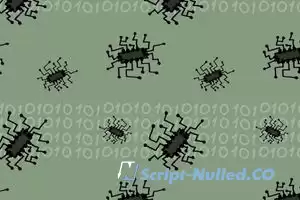
Hackers can compromise our privacy and security on the network in many ways and one of them is through the bank malware. We are going to explain what types exist, how they can affect us and, of course, what to do to avoid it. We will give some advice to avoid this problem and that personal data is always protected.
How malware and bank attacks work
We can say that cybercriminals, through bank malware, aim to access our accounts, steal data or make payments by impersonating the identity. Generally use a bait to sneak in the malicious software and from there take control to get the necessary data.
Mainly are based on malware. They use different strategies so that we end up downloading a file containing the virus or installing something malicious. But they can also use more specific attacks, as we are going to explain, to also achieve control of a bank account.
The operation of bank malware on many occasions it is no different than other varieties of malicious software. For example, you can record everything we write on your mobile or computer, spy on logins, impersonate information they manage to steal, etc. This means that we must always take precautions.
Therefore, access to bank accounts can be compromised if we are victims of computer attacks of this type. Not only are we going to have difficulty entering the application or bank account, but we could even lose control and an attacker supplanted the identity.
Banking virus classes
Not all virus or bank malware they act and arrive in the same way. So we are going to explain what different types there are and how they can compromise our security. There are bank Trojans, fake applications, hidden software, and other methods that attackers use to steal information.
Bank Trojans
An example of a bank Trojan is TrickBot. It is mainly strained through email through a fake file. What you are looking for is to steal financial information from the victim. You can use Excel file macros, for example, and be able to steal credentials to log into bank accounts.
This type of malware can affect both computers and mobiles, although in recent years the latter have suffered a wave of attacks with bank Trojans. They are generally designed for a specific operating system, such as Windows or Android, and attack better.
They can enter through a file that comes to us by mail, as in the case of TrickBot, but also when visiting an infected website, due to a vulnerability in the system or when downloading any Internet file that contains malicious software and that will execute the malware on the victim's computer.
A bank Trojan will have the ability to capture information, create false redirects, and ultimately put a bank account at risk. You can achieve full control and act as if the victim is actually executing something.
Fake applications
A type of bank malware that also affects a lot both in computer and mobile versions, are fake applications. Basically, as the name suggests, they are fake programs that pretend to be legitimate. They are going to try to make the victim believe that what they are installing is their bank software, but in reality it is malicious.
A bogus banking application has the same goals as a bank Trojan: steal information, take control of the account, and impersonate the identity. Sometimes it will even look almost the same as the legitimate application, so the victim can fall into the trap and leave the data on a tray.
Mainly the attack begins when we put the bank details. That information will travel to a server controlled by the attacker. This way you can steal the password and take control, acting as if it really is the victim who makes a payment or takes any action.
Hidden software
Something similar happens with hidden software. In this case it is a legitimate, safe program that has some spyware. For example, an attacker can take advantage of some vulnerability in a program to strain additional software and that is going to be what really puts security at risk.
With this, when the victim logs in or takes action with the banking application, the spyware will be collecting data. All this always in a hidden way, without the victim being aware that they are exposing the bank information when logging in or making any payment.
Keylogger
A keylogger, although not specific malware for bank accounts and applications, is also going to be a major problem. In this case we are dealing with a type of software that is responsible for collecting passwords. What it does is record keystrokes of keys made by the user and thus steal the username and password.
It usually comes through malicious files or fake programs that the victim installs. They can be more or less sophisticated, since some focus solely on recording what is written once it detects that you are going to log in to a service. It is, therefore, another way they can use to put security at risk.
Phishing banking
In this case we are not facing a specific type of malware, but rather a strategy. Phishing consists of scam the victim to log in through a fake link. By putting the data, that information will go directly to the hacker and not to the bank servers where we try to log in.
It is a classic in password theft and also affects bank accounts. For example, something common is that we get an email indicating that there is a problem with our bank account. We may be asked to log in to change some of the settings, send some data, etc. But of course, we are really entering a false page.
How to be protected
After explaining the types of bank malware that exist and how they can compromise our security, we are going to give some essential tips to be protected. The objective is to avoid intruders in our accounts and that they do not put personal information and bank details at risk.
Have everything updated
The first thing is to have everything updated. Many types of malware in general, and banking in particular, are going to take advantage of some security breach. Once they exploit that vulnerability, they will be able to sneak in the malicious software without us noticing and steal passwords or take control.
You should always have the updated operating system, but also any application that you use or network drivers. In all these cases you must have the latest versions and correct any known vulnerability so that it is not the route of entry for bank viruses and other threats.
In the case of Windows, to update it you have to go to Start, you enter Configuration and you will Windows Update. There will appear possible files that you can install and have everything updated correctly. It is something that you should do periodically to always have everything correctly installed.
Use security programs
Of course, another very important point is to use security programs. A good antivirus It is essential to prevent the entry of malware and also to detect possible malicious software on the computer and eliminate it before it can put security and privacy at risk.
For example, Windows Defender is a good option. However, there are many alternatives both free and paid. Some like Avast or Bitdefender also come in handy to avoid attacks. However, whatever you choose, you need to make sure it works well and that it really will protect you.
Install only official applications
Something fundamental is to use only official programs. This means that you should avoid third-party applications and find them on sites outside the bank's official pages or stores like Google Play. It is true that sometimes you can find applications outside the official ones that have certain additional functions, but that can pose a risk.
A hacker could use these alternative programs to strain malware. Therefore, our advice is to always download them from secure sources, such as the bank's website and reliable application stores. This will help at least reduce the risk that you are installing some kind of fake software.
Protect networks
Having protected networks and using secure wireless networks will also help you avoid bank malware and related attacks. Some attacks will take advantage of unsafe connections to get in the way and steal information, passwords and, ultimately, compromise security.
Therefore, whenever you are going to log into your bank account you must make sure that you are on a secure network. You must avoid public Wi-Fi networks, such as a library, shopping center or airport. However, if you need to make a payment or log in to these types of networks, you can always use a VPN to encrypt the connection.
Common sense
But if there is something important to avoid bank malware and any type of computer attack in general, it is common sense. Avoid making mistakes It is essential not to infect the system with threats and not fall into the trap of hackers, as is the case with Phishing or by installing fake applications, for example.
Keep in mind that most computer attacks are going to require us to make a mistake. So if we don't fall into basic traps like opening a malicious file that comes to us by email, installing an unofficial program, or logging in outside of trusted sites, We will have a lot of livestock in order to be protected correctly.
In short, as you have seen there are different types of bank viruses. It is essential to be protected and know how to identify threats as soon as possible so that passwords and personal data are not in danger at any time.
⚠ Information
Visitors who are in the group
Guests they can't download files.
Log in to the site under your
login and password or if you are a new user go through the process
registrations on the website.



There are no comments
Information
Users of Visitor are not allowed to comment this publication.